“Yotpo is a fundamental part of our recommended tech stack.”
 Laura Doonin, Commercial Director
Laura Doonin, Commercial Director
 Yieldify + Yotpo eBook
Yieldify + Yotpo eBook
Together, Yieldify and Yotpo enable eCommerce sites to create responsive and unique customer journeys that integrate user-generated content (UGC) and personalised triggered messaging in order to increase customer engagement and supercharge conversion.

eCommerce businesses live and die by their conversion rate. Great products, up-to-date design, and good SEO are all part of the equation, but they mean nothing unless your site can convert browsers into buyers.
So what’s a good conversion rate? According to an extensive Yotpo study, the average conversion rate for eCommerce stores is 2.1%. However, conversion rates are fickle beasts, and vary widely based on factors such as the user’s device, the origin of the lead, and the type of store, product, and industry. For example, the average conversion rate for sporting goods websites is just 2%, whereas the food, tobacco, and beverage industry cracks 5% conversion rates on average.
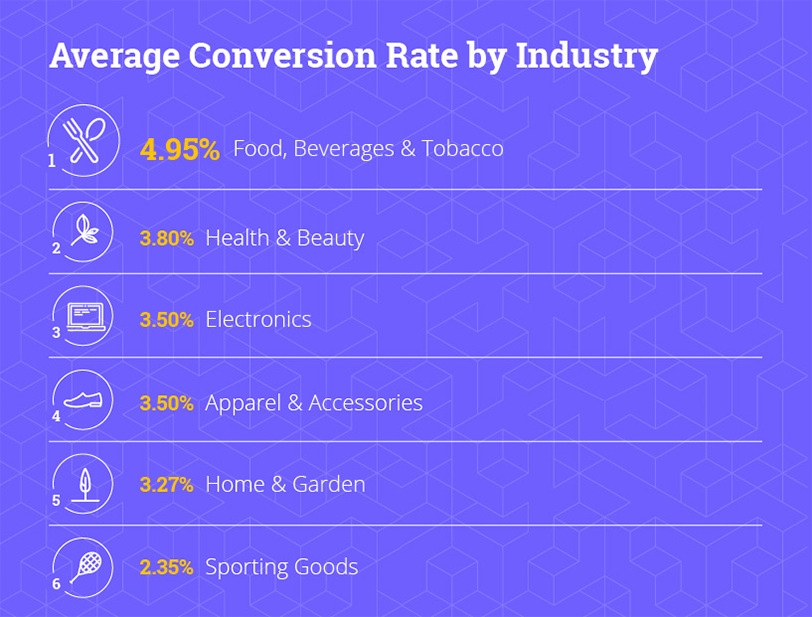
And conversion rates can increase dramatically with UX enhancements, like the addition of curated user-generated content (UGC) to product and category pages. The conversion rate for tobacco, food and beverage websites with UGC jumps from 3% to 9% – a 203% increase!
We’ll show you how to amplify the voices of your own happy customer base to achieve similar results. When buyers become brand ambassadors through UGC, it makes a serious increase to your bottom line.
For most businesses, optimising sites for increased conversion rates is a marathon process of trial and error. Processes like A/B testing, tweaking, guessing, and iterating, which often take huge amounts of design and development resources, and can take months before they lead to real improvements. However, it doesn’t have to be that way.
With the right hacks, any ecommerce site can turn the marathon into a sprint, and this ebook will show you how.
Personalise, personalise, personalise. According to Forbes, marketers who deliver personalised web experiences are seeing double digit returns. But what does this really mean and can you implement it?
The definition of personalisation is nebulous at best, nearly meaningless at worst. Put simply, it’s making your content change dynamically to reflect the visitor who’s on the page – and, usually, the actions they take there. Personalised messages appear to your target visitor based on their actions, like moving to exit or dwelling on a page for a long time.
Personalisation works to solve a variety of user journey issues, from assisting customers having difficulty navigating the site, to creating a sense of urgency with triggered pop-ups depending on user behaviour.
However, personalising your eCommerce store can be complex – there are dozens of helpful cloud solutions out there to choose from, and it requires real scrutiny to make sure it’s done right (even the smallest errors here can screw up the user experience). The businesses that get to this stage usually have deep pockets and plenty of time to invest.
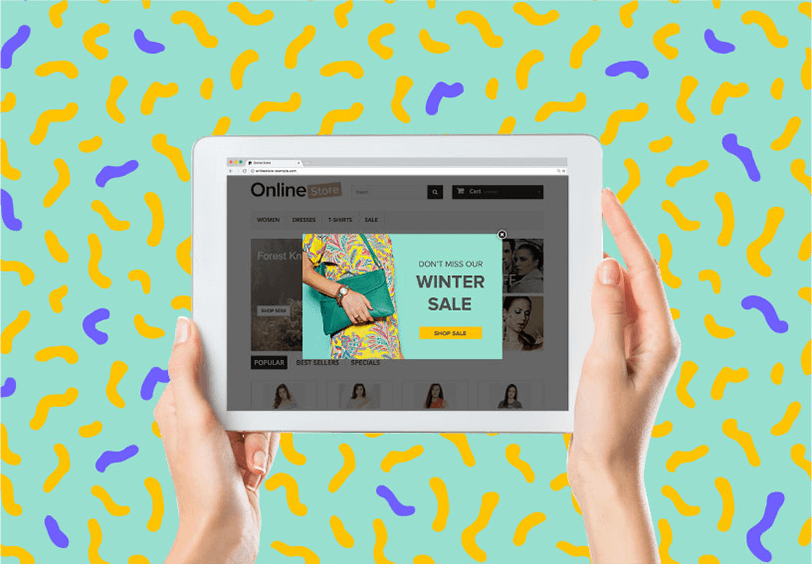
But there’s a simpler way to personalise your website’s user experience – simply layer those personalised triggered messages on top of your site. These can be subtle notifications in the corner of the screen or even banners on the top of the site.
Bottom line, personalised triggered messages are simple to set up and make sure you’re getting the best result possible when it comes to your on-site conversion rates.
Steiner Sport, a sports retailer in the US, wanted to target cart-abandoning website visitors for a lead generation campaign.
Strategy
They used Yieldify to show an image relevant to each visitors’ onsite journey in conjunction with a discount offer as the visitor exited the site, and tested this method against static images.
Results
Steiner Sport found that offering a lower discount with an image personalised to the visitor’s onsite journey was more likely to convert than a bigger discount with a static image. This resulted in:
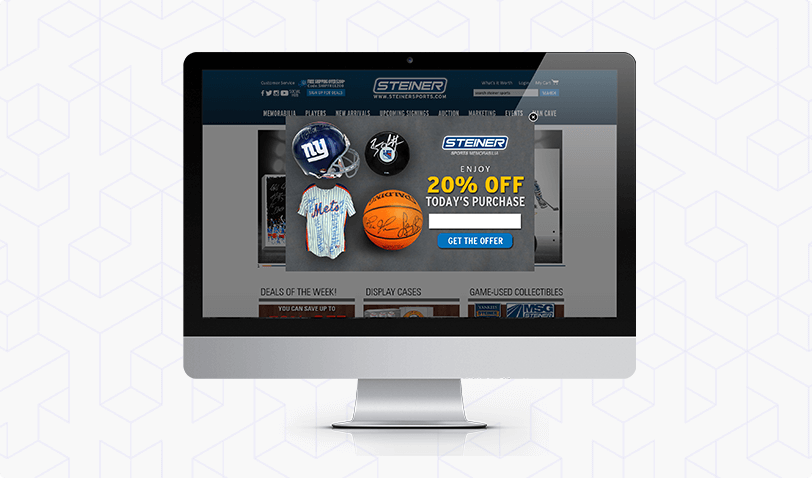
Optimising your site is easier said than done – there are thousands of actions you could take to make your conversion funnel work best. You could spend hours tweaking button colours or headline copy, but if those weren’t the issue, you’ll simply be wasting energy. So, you need to prioritise – and prioritising effectively means using your data.
Smart marketers use website analytics to show them where the key problems are in the customer journey – for example, if there’s significant dropoff in the checkout process – and focus on them.
Recent figures from Listrak suggest that 78% of users abandon their shopping carts – so focus on making it as simple as possible to maximise follow-through. Other problematic parts of the customer journey might be the choice and placement of the calls-to-action, the sign-up process, or the length of lead forms.
A case study from Walmart provided an excellent example of honing in on one part of the customer journey. Conversions dropped sharply when page loading time took more than four seconds (which more than half of all users experienced!) so they focused on improving page speed. For every one second of speed gained, conversions improved by 2%.

First impressions count. Landing pages need to be clean and simple with one key goal – for example to collect leads or to sell a single product. Every word needs to pull its weight, and needs to steer users towards executing that desired action, or you risk losing customers. (For more great landing page tips, you can read this Kissmetrics post).
Many tools are available for marketers who want to up their landing page game. Here are three simple options to help you create and optimise your landing page without the need for dev support:
Visualise your users’ journeys with a heatmap of their movements on the page.
Join a community of testers to give and receive feedback on site-usability for free.
Use Unbounce’s customisable landing page templates to improve conversions.

Good content differentiates amazing marketing from the mediocre.
Why? Because great content is the cornerstone of delivering a great experience. When you offer your customer more than just the product, you’re promoting a relationship with your brand that is the first step to loyalty and advocacy.
While there are thousands of ways to create content – from video to social, to podcasts and imagery- content marketing doesn’t have to be expensive to work. According to Oracle, it can cost up to 41% less per lead than paid advertising.
One example of a content-led strategy that improved conversions is the case of US sports company, Precor. Using targeted and specific content at each step of the customer funnel, they were able to improve its lead-generation by 74%!
If you’re looking for some quick content fixes, consider:
People process visual content faster than text – 60,000 times faster, in fact.
This advice comes from the Mad Men era of advertising legend David Ogilvy, and it’s still true today.
There’s a reason CTAs are ‘the tipping point between bounce and conversion’. If your CTA is compelling, customers will convert.
Trading out branded images and stock photos for user-generated media is an easy way to give your content more oomph. According to a Yotpo study, 77% of consumers say that authentic photos from customers affect their purchasing decisions more than professional photos from stores do.

Customers convert when their desire to buy something overpowers any doubts or obstacles slowing them down. The best way to clear a purchase path for your shoppers is to win their trust through user-generated content (UGC). UGC is any media created by your customers – from reviews, to photos and videos of your products in use, or customer Q&A.
UGC provides the word-of-mouth marketing effect for an online storefront that brick-and-mortar stores have authentically. A handbag on the rack might not be appealing, but if you see it being toted around the store by another customer, suddenly it’s a must-have. When you get to see the item in action, you see it has been embraced and validated by someone else, which increases its perceived value.
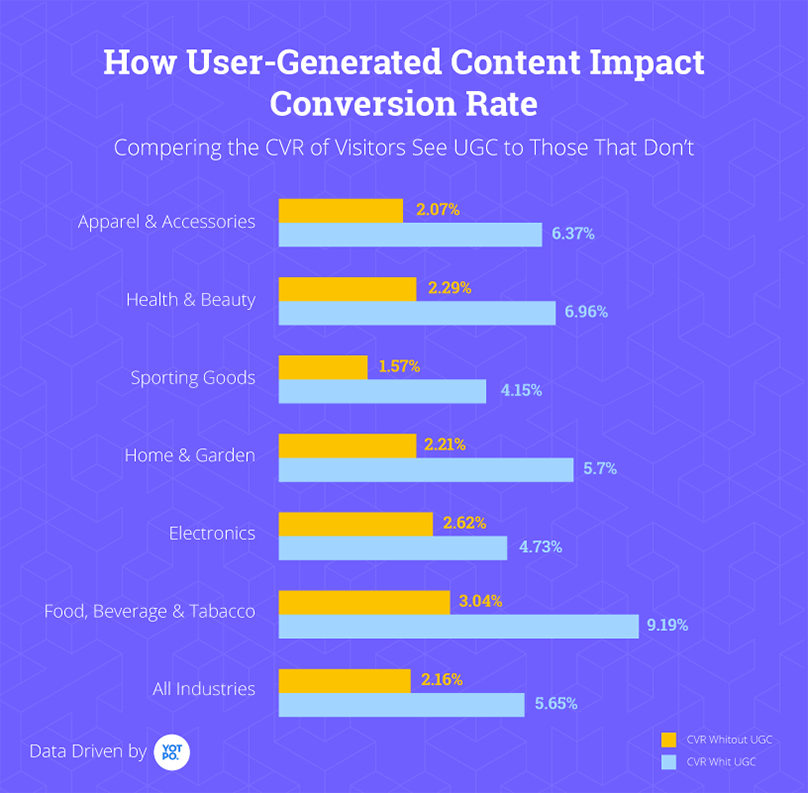
UGC accomplishes this phenomenon for eCommerce. So it’s no surprise that 30% of Yotpo survey respondents said they’ve purchased something they first saw on Instagram. Or that Fendrihan, a men’s grooming retailer, experienced a 500% boost in conversion rate when customers interacted with integrated UGC (star ratings, customer reviews, and public Q&A) on product pages.
The simplest way to collect UGC is through post-purchase e-mails that request reviews, photos, and videos. Additionally, stores can gather quality UGC directly from social media channels, like Facebook and Instagram.
You can even host social media contests to inspire certain types of UGC, and feature the winners on your website and relevant product pages. One great example of a UGC campaign is Starbucks’ White Cup Contest.
The coffee giant challenged fans to take a standard white Starbucks cup, decorate it, and snap a pic of their personalized cup in a unique location. All photos uploaded to social media were entered into a contest to have their design distributed on actual Starbucks cups. This campaign generated more than 4,000 pieces of customer uploads in three weeks!
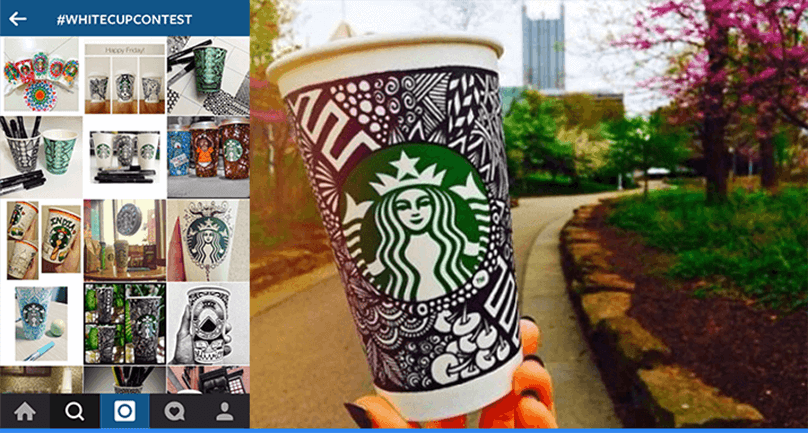
The results of properly generating and showing off user-generated content can be drastic. Take this experiment for example:
Vanity Planet, an online beauty products retailer, wanted to increase purchases of its popular ‘Spin for Perfect Skin’ brush.
Strategy
They used Yotpo’s social-curation tool to add customer photos to the product page – using images submitted with reviews or on Instagram – of customers enjoying and getting value from the brush. They then ran an A/B test on 5,723 visitors to measure the impact the visual UGC had on checkouts from the product page.
Results

Conversion-rate optimisation is a difficult art to master – and there’s always room for improvement. A/B testing is a great way to optimise your site, but every customer is different, and user behaviour changes depending on many contextual factors. So how can you know where to start?
To supercharge your conversion rate quickly, engage with your data to understand where the challenges are in your visitor journey. Then choose from a host of smart and simple changes you can make without development resource or re-building your funnel, like small changes to a form or through simple personalisation.
When it comes to conversion rates, even just a few well-placed reviews, customer photos, or past buyer Q&A can make an overlooked item sparkle, and the customer convert. And UGC begets UGC – customers naturally want to join in the conversation with their own content and feedback. This means a small effort on your part to get the “UGC ball” rolling can have a lasting ripple effect when it comes to brand engagement and, ultimately, conversion rates.
Be methodical and smart and you’ll start to see results!
Yieldify creates smart and simple marketing technology that delivers conversions without the heavy lifting. We’re trusted by more than 500 brands on more than 1,000 websites globally, including Marks and Spencer, French Connection, Omni Hotels and Anthropologie. With the help of our team of experts, you can use the Yieldify Conversion Platform to deliver smart and simple onsite and email experiences that stop cart abandonment and improve conversions.
Yotpo helps brands collect and leverage reviews and photos throughout the buyer journey to increase trust, social proof, and sales.
1. Ask intelligently
2. Social proof speaks for itself
3. Brand & product discovery
Check out these links:
YOTPO.COM YOTPO BLOG
Your information will be treated in accordance with our Privacy Policy

This will take just a moment…We're finding the right person on our team to help your brand!
“Yotpo is a fundamental part of our recommended tech stack.”
 Laura Doonin, Commercial Director
Laura Doonin, Commercial Director


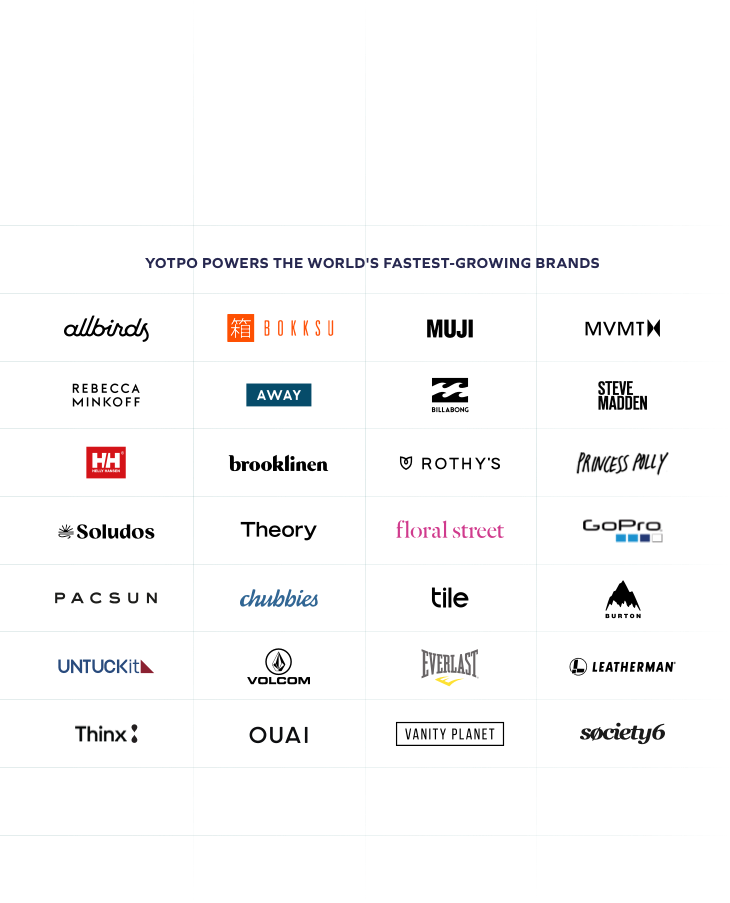


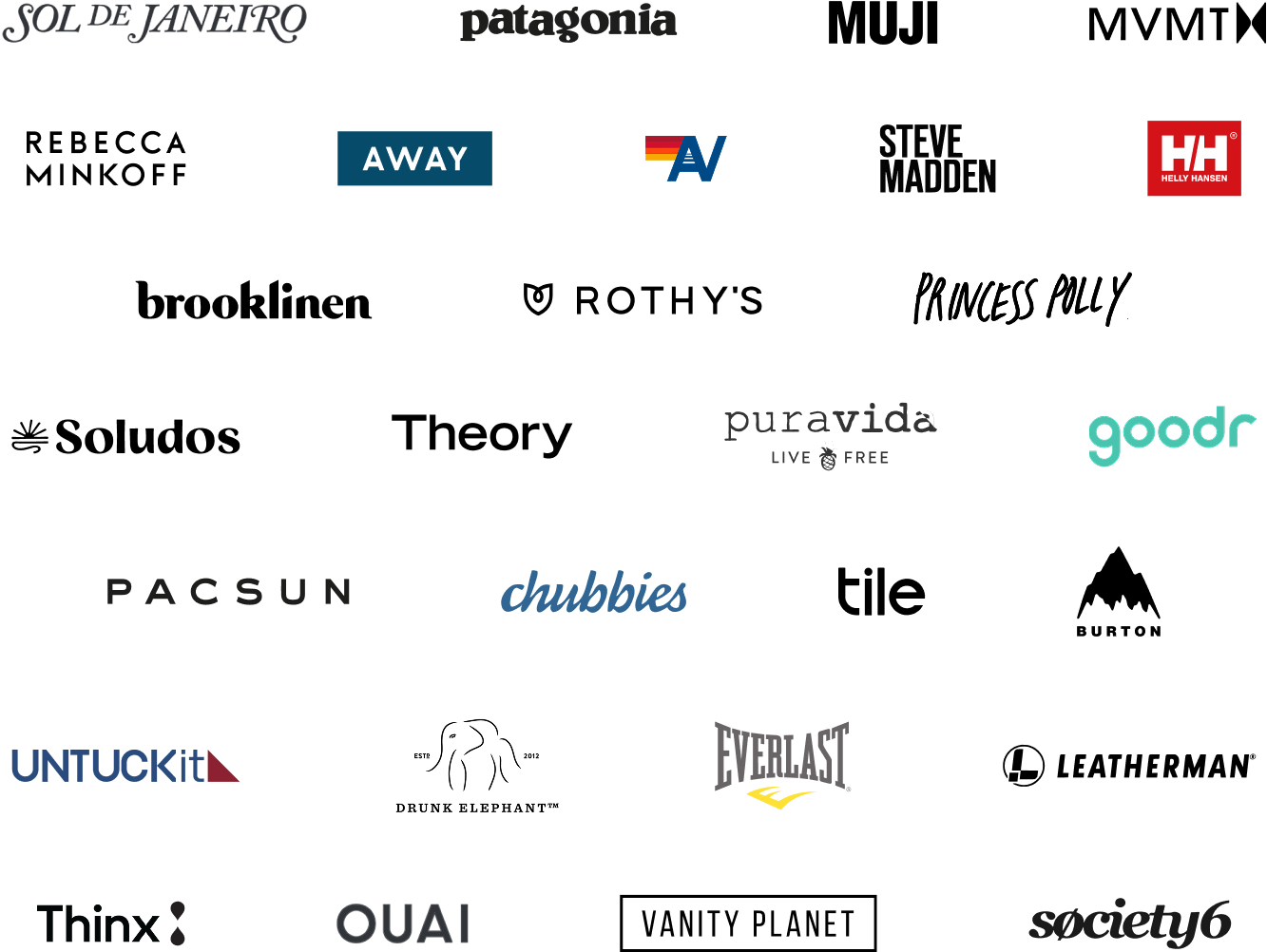



 Join a free demo, personalized to fit your needs
Join a free demo, personalized to fit your needs